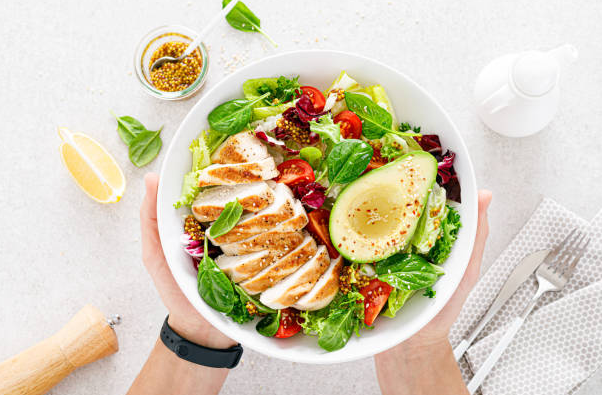Amidst the hustle and bustle of modern life, it’s easy to put nutrition on the back burner. But even with a packed schedule, prioritizing healthful choices isn’t as challenging as it seems. One fundamental strategy is to shop for healthy foods.
Making a beeline for nutritional options during your grocery run sets the stage for a healthy week. Let’s explore this concept further and delve into practical strategies that seamlessly blend healthy eating into your everyday life.
The Power of Meal Planning
Plotting your meals in advance is a key strategy for nutritional success. Allocate a certain time each week to devise your meal plans. This streamlines your schedule, curtails last-minute unhealthy choices, and minimizes waste by ensuring you purchase only what you need. Leverage digital meal planning apps or go traditional with a pen and paper.
See Also: 7+ Impressive Cucumber Juice Benefits For Your Health
Navigating the Grocery Store for Health Foods
Invest time to learn how to navigate your grocery store for healthy foods. Your journey to a balanced diet begins here. Opt for unprocessed, whole foods, which are typically more nutritious and satisfying than their processed counterparts.
Choose lean proteins, fruits, vegetables, and whole grains. If your budget allows, consider organic produce to reduce exposure to potential toxins.
The fresh, unprocessed foods are usually located around the store’s perimeter – that’s your destination. Processed foods often lurk in the inner aisles. Always scrutinize labels, steering clear of items with unpronounceable ingredients.
The Game-Changer: Advance Meal Prep
Advance meal prep is a godsend for healthy eating. Use your quieter days to cook large meals and freeze them in manageable portions. This guarantees a healthy option is always on hand. Employ crockpots, instant pots, and single-pan dinners to make life easier. Pre-cut fruits and vegetables for swift snacks or future meals.
Mastering Healthy Snacking
Snacking doesn’t have to be a pitfall. Healthy snacks maintain a balanced diet throughout the day. Rather than reaching for chips or cookies, consider nuts, seeds, yogurt, fruits, or veggies with hummus. Pre-portion your snacks to avoid overeating.
Hydration is Key
Water is vital for proper body function. Carry a reusable water bottle to ensure you’re always hydrated. If you’re not a fan of plain water, enhance it with fruits, herbs, or a dash of juice.
Eating Out Without Guilt
Occasionally, eating out or ordering in is inevitable. When doing so, don’t hesitate to request meal modifications for a healthier twist. Opt for grilled over fried, vinaigrettes over creamy dressings, and whole grains when available.
Investment in Kitchen Tools
Effective kitchen tools expedite healthy cooking. A robust blender makes smoothie prep a breeze. A slow cooker enables effortless, hands-off meals. A food processor rapidly chops veggies or blends dips and sauces.
Understanding Your Nutritional Landscape
To adopt healthy eating habits successfully, understanding your unique nutritional needs is essential. These vary based on age, sex, size, activity level, and overall health. Registered dietitians or online calculators and guidelines from reputable health organizations can help customize a diet plan that’s right for you.
The Dual Benefits of Physical Activity and Healthy Eating
Despite a busy lifestyle, regular physical activity is a crucial companion to healthy eating. It helps burn excess calories, reduces stress, boosts heart health, and enhances mood. Incorporate short bouts of physical activity into your day – every little bit adds up.
The Power of Superfoods
Superfoods refer to nutrient-dense foods packed with vitamins, minerals, fiber, and antioxidants. Foods like berries, leafy greens, nuts, seeds, fatty fish, and legumes are your friends. Incorporating a variety of these superfoods enhances the health benefits of your meals and snacks.
Addressing Emotional Eating
Emotional eating can often be a stumbling block on the path to healthier habits. Recognize and tackle emotional eating by finding non-food ways to cope with negative emotions. Also, portion control is vital even when eating healthy foods. Understand what constitutes a serving size to manage calorie intake effectively.
Lastly, adequate sleep plays a significant role in healthy eating. Insufficient sleep can trigger hunger and cravings, making it challenging to stick to healthy eating goals. Aim for 7-9 hours of sleep nightly and establish a relaxing bedtime routine.
Final Thoughts
Adopting healthy eating habits amidst a busy lifestyle isn’t a sprint, but a marathon. The key is steady progress, not instant perfection. Small, consistent adjustments to your eating habits can create profound impacts on your health over time. Implement these tips gradually, and soon you’ll see a healthier lifestyle emerging from your everyday rush. Just remember, that each step, no matter how small, brings you closer to your goal.









